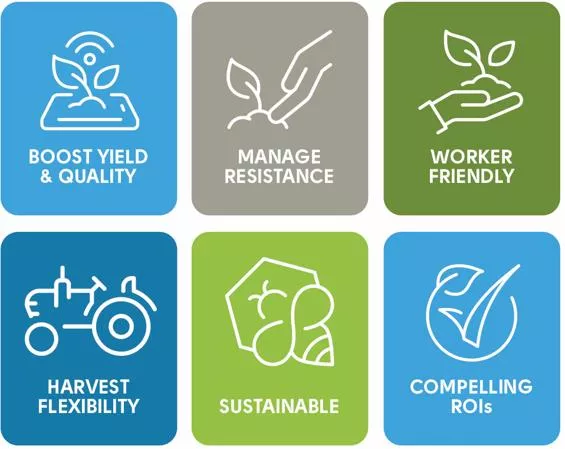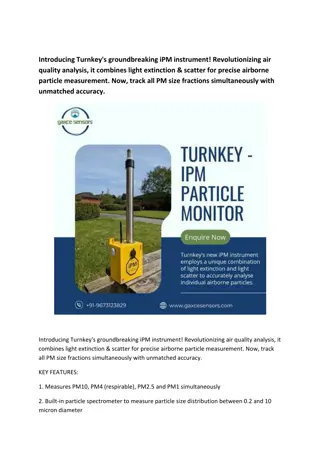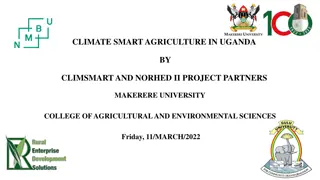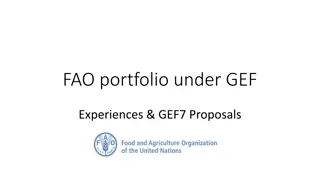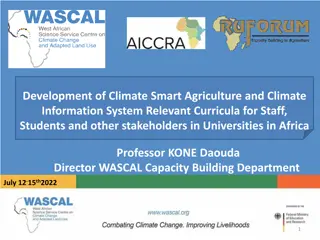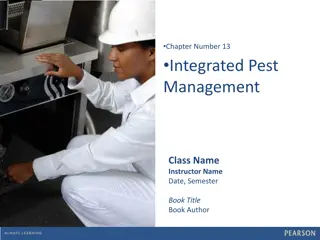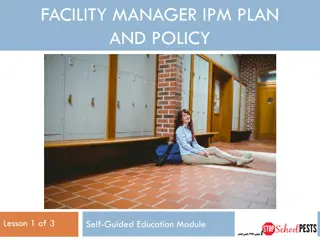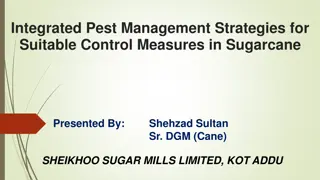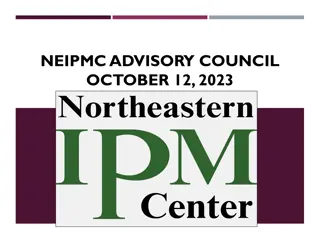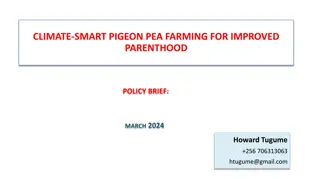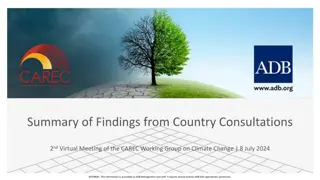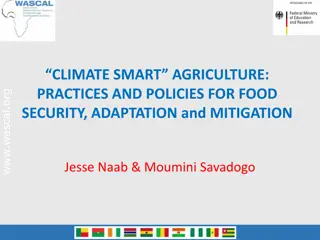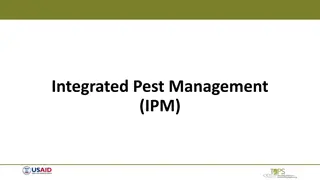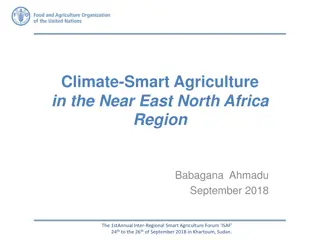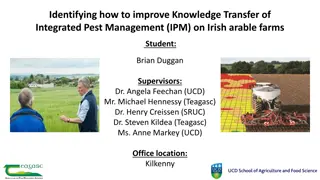Enhancing Sustainable Agriculture: Integrating IPM and Climate-Smart Practices
IPM and Climate-Smart Agriculture are gaining momentum in the national agenda. Challenges include lack of focus on IPM, limited practices, and incentive structures. However, new opportunities are emerging with increased engagement, technology integration, and market valuations. The IPM Alliance aims to bridge knowledge gaps through a public-private partnership. The panel discussion focuses on moving forward with industry expert Keith Pitts.
- Sustainable Agriculture
- IPM
- Climate-Smart Practices
- Agriculture Innovation
- Public-Private Partnership
Download Presentation

Please find below an Image/Link to download the presentation.
The content on the website is provided AS IS for your information and personal use only. It may not be sold, licensed, or shared on other websites without obtaining consent from the author. Download presentation by click this link. If you encounter any issues during the download, it is possible that the publisher has removed the file from their server.
E N D
Presentation Transcript
IPM & Climate Smart Ag Getting on the Agenda National IPM Coordinating Committee October 19, 2023
The Challenges Until recently, IPM has largely been absent from the discussion Regenerative, Sustainable, Organic But new opportunities are emerging Limited Crops and Practices Row Crops, No-Till Specialty Crops, Greenhouse? Refresh for integrating new technologies is needed Bio, Big Data and Precision Ag Incentive structures, particularly private sector, were not designed for ag Low participation in Voluntary Carbon Markets Support for transition period, e.g. risk management needed Farms, Farmers and Resilience not the focus IPM research investment stagnant Viewing IPM through a climate-smart lens
The Opportunities Until recently, IPM has largely been absent from the discussion IPM is foundational to all farming systems Pest management practices are still top of mind to consumer Limited Crops and Practices Increased USDA, FFAR and Stakeholder engagement Refresh for integrating new technologies is needed Acknowledgement that data gaps exist and need to be filled; sustained dialogue necessary Incentive structures getting a second look Setting market valuations for BMPs and ecosystem services can help drive incentives Other crops & key metrics are entering the discussion; e.g. biodiversity, resilience Recognized need of key targets and supported practices & support transition, risk management IPM research investment stagnant Tackling all the above will establish relevance & create funding opportunities Developing infrastructure to reduce grower burden & increase grower participation
The IPM Alliance: A Public-Private Partnership Identify Knowledge Gaps Sponsor, and advocate for, research to fill said Knowledge Gaps Integration of new technologies Sustained and Harmonized Dialogue Establish valuations for ecosystem services Initial Plan: 5-Years, $10M
On to the Panel Discussion Keith Pitts ProFarm Group Bioceres Crop Solutions kpitts@profarmgroup.com (240) 463-4357

 undefined
undefined


